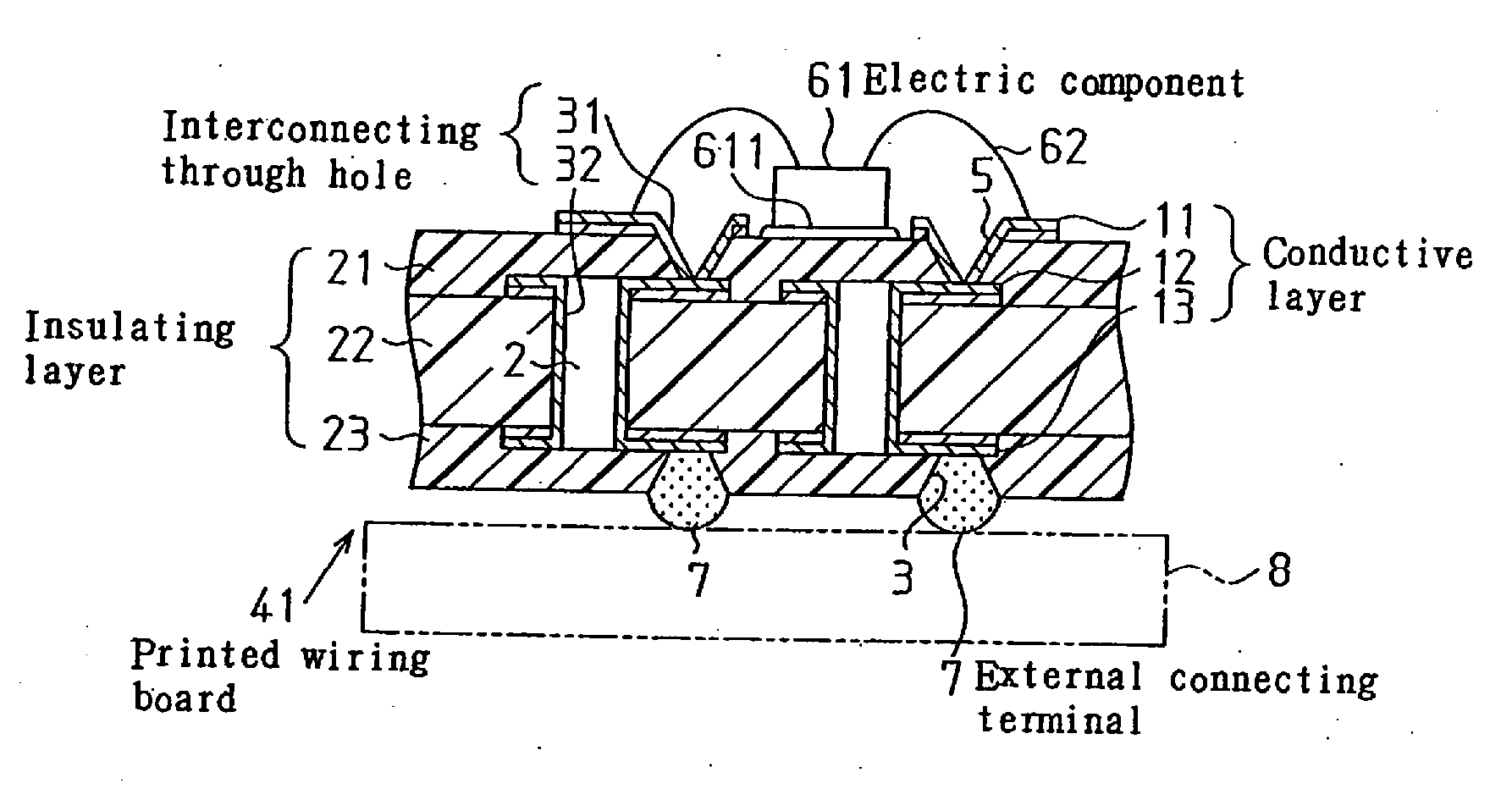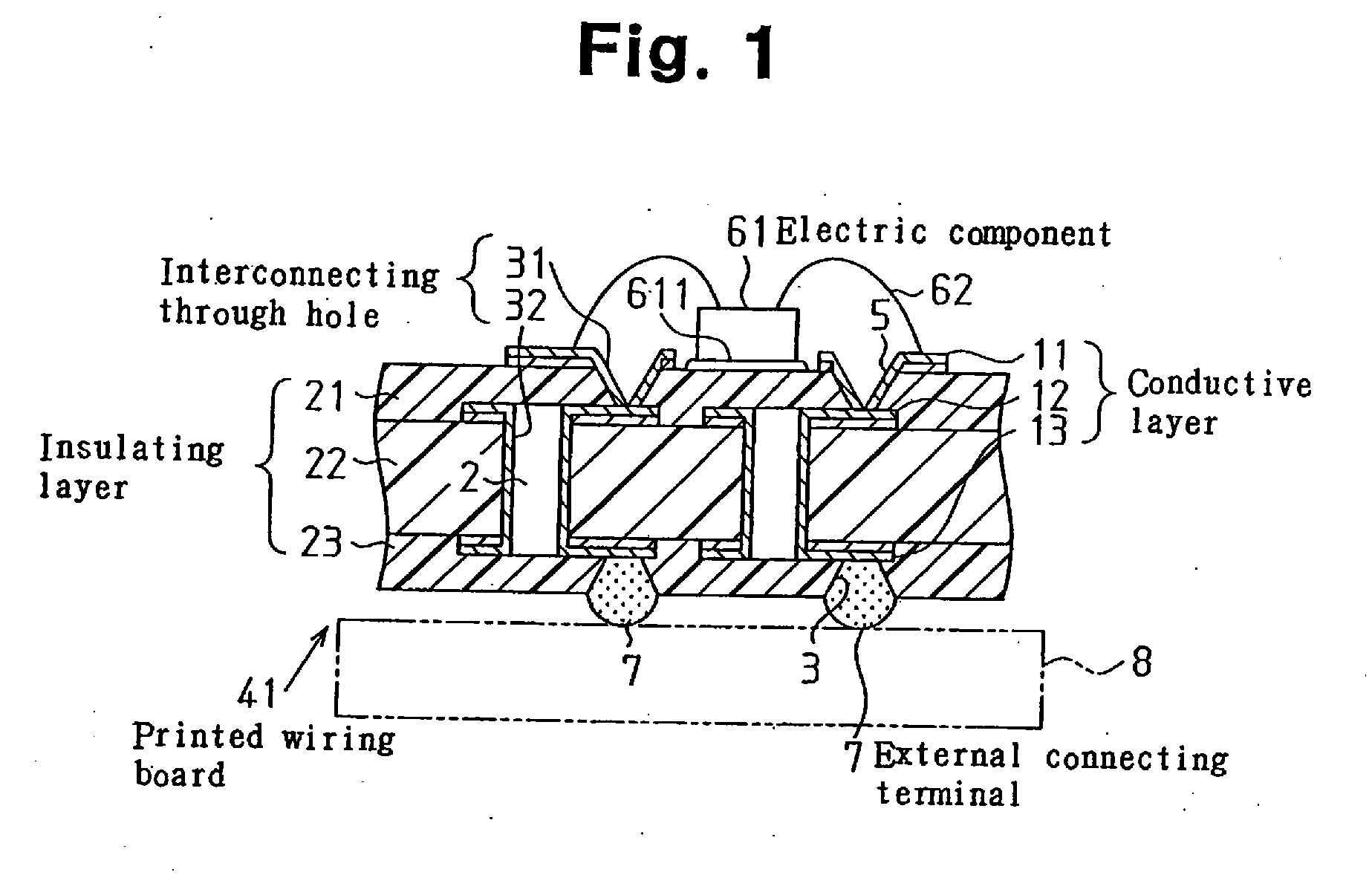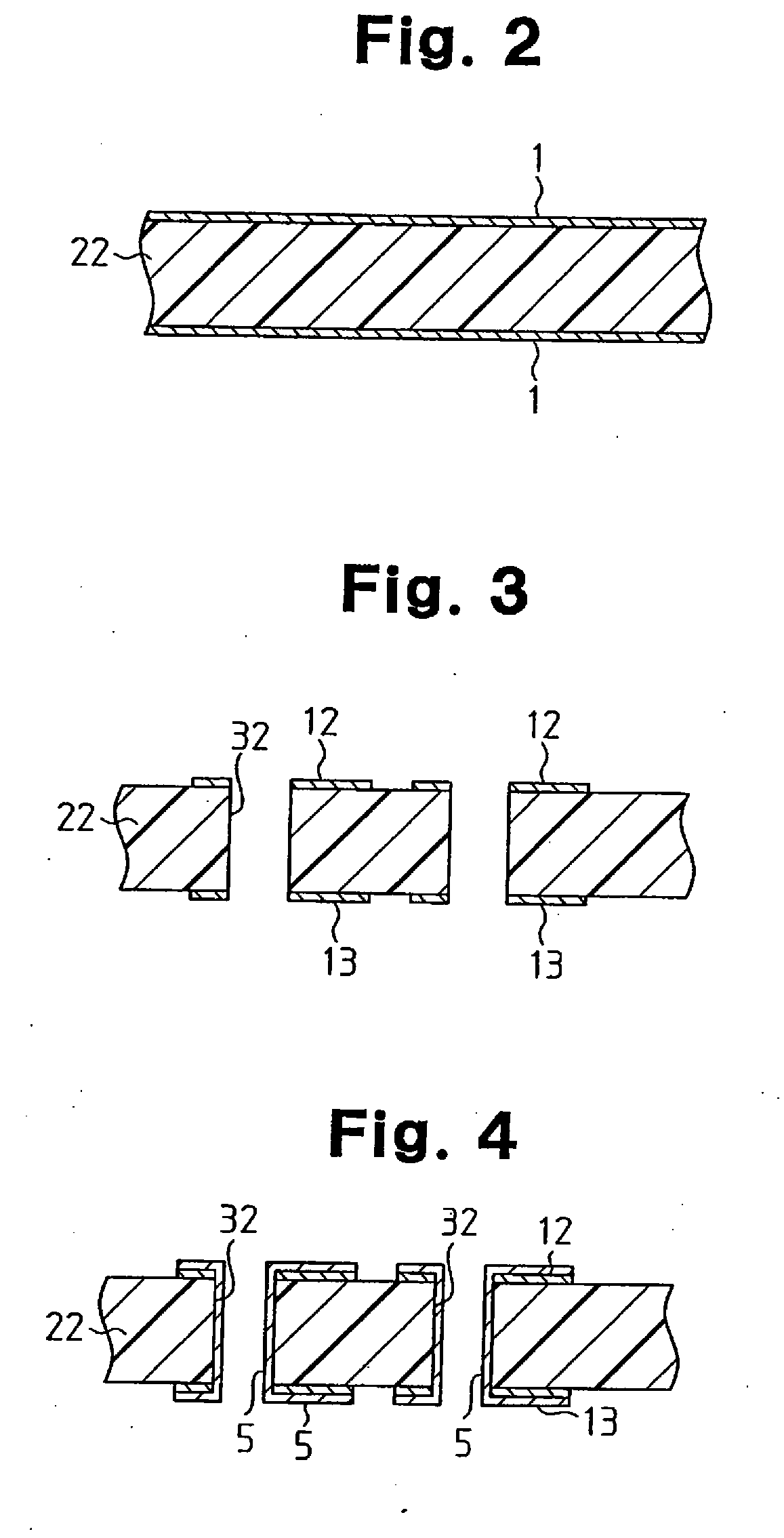Printed Wiring Board and Method for Manufacturing The Same
a printing method and wiring board technology, applied in the direction of etching metal masks, metal adhesion improvement of insulating substrates, non-metallic protective coating applications, etc., can solve the problems of wasteful procedures, inconvenient manufacturing methods, and inability to build up an odd number of conductive layers
- Summary
- Abstract
- Description
- Claims
- Application Information
AI Technical Summary
Benefits of technology
Problems solved by technology
Method used
Image
Examples
first embodiment
[0179] The printed wiring board of the embodiment according to the first aspect of the invention will be explained referring to FIGS. 1 to 9.
[0180] The printed wiring board 41 of the first embodiment has three conductive layers 11 to 13 which are built up via insulating layers 21 to 23 respectively, as shown in FIG. 1. The conductive layers 11 to 13 are electrically connected to one another by interconnecting through holes 31 and 32.
[0181] The first conductive layer 11 is a component connecting layer on which an electronic component 61 is mounted and leads electric currents in and out of the component 61.
[0182] The second conductive layer 12 is an electric current transmitting layer for transmitting internal electric currents of the printed wiring board 41.
[0183] The third conductive layer 13 is an external connecting layer for connecting external connecting terminals 7 for leading electric currents in and out of the printed wiring board 41. The surface of the third and outermos...
second embodiment
[0203] The printed wiring board of the second embodiment has five conductive layers 11 to 15 which are built up as shown in FIG. 10.
[0204] The first conductive layer 11 is a component connecting layer on which an electronic component 61 is mounted and leads electric currents in and out of the component 61.
[0205] The second to fourth conductive layers 12 to 14 are electric current transmitting layers for transmitting internal electric currents of the printed wiring board 42.
[0206] The fifth conductive layer 15 is an external connecting layer for connecting external connecting terminals 7 for leading electric currents in and out of the printed wiring board 42. The surface of the fifth conductive layer 15 is covered with the fifth and outermost insulating layer 25 with the external connecting terminals 7 being exposed.
[0207] When a printed wiring board 42 of this embodiment is manufactured, conductive layers 13 and 14 and interconnecting through holes 33 are formed in the third and...
third embodiment
[0212] The printed wiring board of the embodiment according to the second aspect of the invention will be explained referring to FIG. 11.
[0213] As shown in FIG. 11, the printed wiring board 101 of the third embodiment has an internal insulating substrate 116 having on each side a conductor circuit 115, an internal insulating layer 117 laminated on the surface of the internal insulating substrate 116 and an external insulating layer 118 laminated on the internal insulating layer 117. Each internal insulating layer 117 has on the surface an internal conductor circuit 125, while each external insulating layer 118 has on the surface an external conductor circuit 135.
[0214] The internal insulating layer 117 is of a glass cloth-reinforced prepreg, whereas the external insulating layer 118 is of a resin.
[0215] The internal insulating layer 117 is a prepreg prepared by impregnating a glass cloth with an epoxy resin, and the external insulating layer 118 is an epoxy resin.
[0216] Next, th...
PUM
| Property | Measurement | Unit |
|---|---|---|
| Electrical conductor | aaaaa | aaaaa |
| Energy | aaaaa | aaaaa |
| aaaaa | aaaaa |
Abstract
Description
Claims
Application Information
 Login to View More
Login to View More - R&D
- Intellectual Property
- Life Sciences
- Materials
- Tech Scout
- Unparalleled Data Quality
- Higher Quality Content
- 60% Fewer Hallucinations
Browse by: Latest US Patents, China's latest patents, Technical Efficacy Thesaurus, Application Domain, Technology Topic, Popular Technical Reports.
© 2025 PatSnap. All rights reserved.Legal|Privacy policy|Modern Slavery Act Transparency Statement|Sitemap|About US| Contact US: help@patsnap.com



